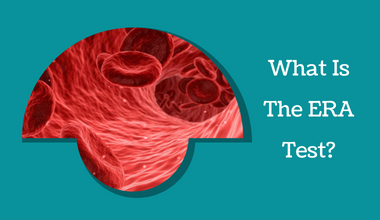It can be extremely disheartening for a patient who has been gone through for multiple rounds of In Vitro Fertilization (IVF) with no success. You may have even used (PGS) Pre-implantation Genetic Testing for Aneuploidy genetic testing on your embryos. PGS will determine the number of chromosomes in embryos, and it will allow your doctor to choose chromosomally healthy embryos for transfer. Compared to defective embryos, chromosomally normal embryos are far more likely to implant and produce a healthy baby. It will be very challenging and hard to tell you if the timing of your frozen embryo transfers is contributing to your difficulty. You may or may not have heard of the Endometrial Receptivity Analysis, and it is a new test that can reveal important information (ERA). If you wonder what the ERA Test success rate is and whether it may help you. Here are some details about ERA.
ERA test
An ERA is an acronym for Endometrial Receptivity Analysis or Array. It is a genetic test that uses a small sample of a woman’s endometrial tissue to see if the lining of a women’s endometrium is ready to accept an implanting embryo.
Each woman’s cycle has a few days-long implantation windows between the 19th and 23rd menstrual cycles. The ovaries produce progesterone during this period, known as the luteal or secretory phase. To establish an ideal environment for implantation, progesterone causes many minor but significant modifications to the uterine lining. Proteins are produced, and it will cause the lining to thicken and become more responsive. This short window appears in roughly 84 percent of women at the expected time. However, research conducted at the labs has found that roughly 16% of women had a unique window earlier or later than expected. This could suggest that the embryo transfer occurs on a bad day when the window hasn’t yet opened or has already closed, resulting in implantation failure.
ERA test for IVF work process
Is ERA test painful? No. When the endometrial lining is responsive, the endometrial cells on genetic material have a distinct expression, which may produce more or less particular types of RNA. The researchers looked at the expression of 236 genes per sample. They compiled a database of over 12,000 endometrial tissue samples to examine how much RNA was produced at various cycle stages. They then utilized a sophisticated computer algorithm to search for trends until they were able to identify a sample as Receptive or Non-Receptive based on its distinct expression profiles.
This test is highly repeatable, which indicates that the results are consistent whether samples are examined at the same point of the cycle but months apart. Doctors can use ERA to see if a woman’s implantation window is occurring as planned or if the transfer date needs to be moved to achieve the optimum sync between the embryo and the uterine lining.
Why should you take the ERA test for IVF?
This test was performed in a study on patients who had failed to implant a good quality embryo which means at least three unsuccessful embryo transfers within women under 37 years of age or two unsuccessful embryo transfers in women over 37 years of age. It is indicated for people who have a physically unaffected uterus and a normal endometrial thickness of less than 6 mm with no visible changes. A shift in the implantation window was found in roughly 20% of the patients. This test aids in predicting the implantation window, allowing a personalized embryo transfer time to be scheduled based on individual results.
The ERA test success rate has shown great sensitivity and specificity in detecting genomic expression profiles. Until far, the optimal embryo implantation period has been calculated using subjective histology criteria that do not include any particular criteria for patients with diagnosed or undiagnosed infertility. The ERA test avoids these issues because it obtains specific data for each patient and identifies the best endometrial receptivity time for embryo implantation.
Bottom line
Infertility treatment is always changing, and the medical team is there to help you figure out what will work best for you. During personalized transfers, the ERA test for IVF has been shown to boost worldwide pregnancy rates by up to 73 percent. Consult our Candor IVF Center if you think an ERA biopsy could help you.
It is recommended that you proceed with the ERA test if you and your medical consultants believe it will improve your chances of success. It’s a quick and painless test that gives you the information you need to arrange your embryo transfer and increases your chances of IVF success.for IVF








